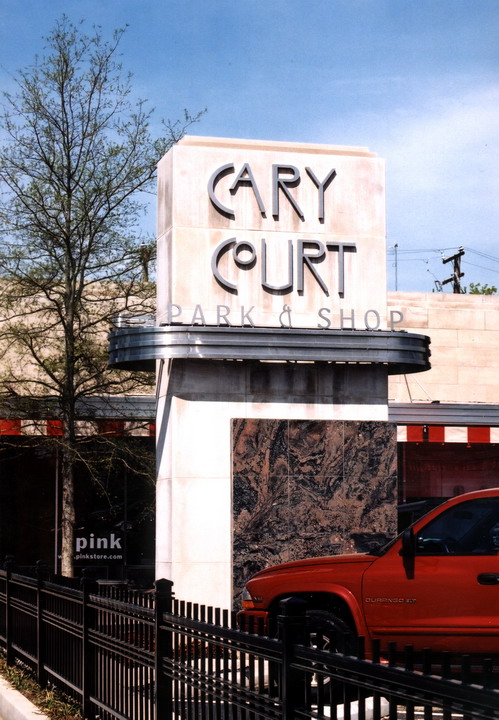Ad-Vice Studios (Mechanicsville, VA) has fabricated signs for 14 years. The shop recently began offering design services for other shops that wish to outsource such work, as well as consulting services for end users and fabricators that wanted to reduce energy consumption or earn LEED points. Much of the shop’s work comprises custom, architectural signage and store-ID and wayfinding systems for retail and mixed-use properties, but architectural signage represents an increasingly significant part of the company’s work.
Ad-Vice produced a 16-sign campaign for Kansas City’s Zona Rosa lifestyle center, a 500,000-sq.-ft, mixed-use development developed by Steiner & Assoc.
Referencing EGD provider CommArts’ (Boulder, CO) design intent, Ad-Vice developed the program using Corel’s CorelDraw and Photo-Paint. The unique campaign features a diverse complement of freestanding directories with integral LCD screens; building-mounted, aluminum-plate ID signs; and building-IDs that integrate with a building’s glass façade. The shop routed the aluminum-plate panels, which are secured to the supporting walls by epoxy studs. The LCD screens presented a challenge because the temperature-sensitive displays required heating and cooling units for each directory and an interior “chimney” to aid airflow.
Ad-Vice’s design team created a rendering for a new monument and tenant-sign program for Cary Court, a shopping institution that first opened in Richmond, VA in 1938. The monument sign features art deco typestyle and architectural features reminiscent of when Cary Court’s debut.
Ad-Vice also spec’d tenant signage reminiscent of its era. All tenant signs were developed as stainless-steel raceways that feature exposed neon, piping and sharp lines associated with art deco architecture.
Although Ad-Vice will bid on such design services, company president David Goodwin said he prefers to be hired directly by the client or general contractor: “As a bidder, it’s your job to bastardize specs to make a project as cheap as possible, which isn’t always in the client’s best interest. I’d rather be a team member who works with a client rather than against him.”
Advertisement
Ad-Vice created another conceptual rendering for Plaza 42, a Philadelphia-area strip mall. Working from site plans and photographs, Goodwin created a hand sketch, then developed a 2-D rendering using Corel Draw and a 3-D template using Ray Dream modeling software.
For most design-only projects, the company charges a flat fee, which the customer prefers, versus an hourly rate that could incur a heftier pricetag should contingencies arise. Of course, developing conceptual drawings leaves designers free to experiment with a broad array of ideas.
“With retail, the goal is to excite and invite, so a concept has to engage with bold colors, typestyles and lighting,” Goodwin said.



 Photo Gallery2 weeks ago
Photo Gallery2 weeks ago
 Paula Fargo1 week ago
Paula Fargo1 week ago
 Real Deal1 week ago
Real Deal1 week ago
 Photo Gallery1 week ago
Photo Gallery1 week ago
 Projects1 week ago
Projects1 week ago
 Women in Signs2 weeks ago
Women in Signs2 weeks ago
 Signs of the Times2 weeks ago
Signs of the Times2 weeks ago
 Business Management6 days ago
Business Management6 days ago







